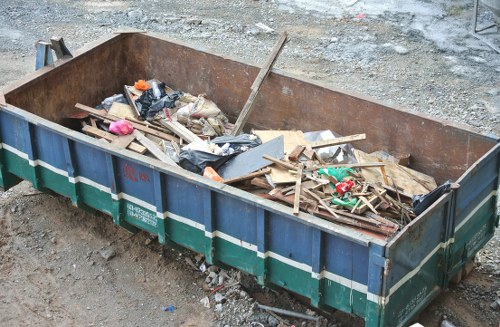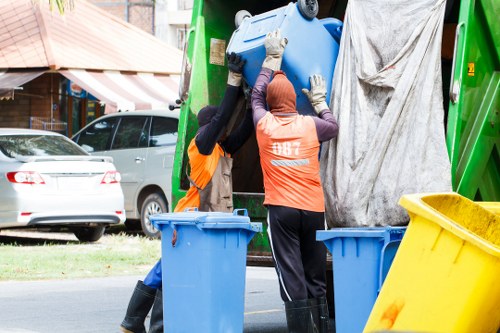Furniture Clearance in Temple: A Comprehensive Guide
Understanding Furniture Clearance

Furniture clearance refers to the process of removing unwanted or outdated furniture from a space. In the context of a temple, this involves carefully selecting and disposing of items to maintain the sanctity and aesthetics of the sacred environment. Whether you are renovating the temple, decluttering, or updating your furnishings, understanding the nuances of furniture clearance is essential.
Clearance in a temple setting is not just about physical removal; it also involves respecting the cultural and religious significance of the items. This means ensuring that the process aligns with the temple's values and traditions, preserving items that hold spiritual importance, and responsibly disposing of those that are no longer needed.
Effective furniture clearance can enhance the temple's ambiance, making it more inviting for devotees and visitors. It also ensures compliance with safety regulations and helps in maintaining a clutter-free environment that supports the temple's operations and activities.
Why Clear Furniture in Temples?

There are several reasons why furniture clearance is necessary in temples:
- Renovation and Maintenance: Regular updates and maintenance require the removal of old or damaged furniture.
- Space Optimization: Clearing out unnecessary items helps in optimizing the available space for worship, events, and daily activities.
- Safety and Hygiene: Removing worn-out furniture reduces the risk of accidents and ensures a clean environment.
- Aesthetic Enhancement: Fresh and appropriate furnishings can enhance the temple's spiritual atmosphere.
Additionally, furniture clearance can be part of larger projects aimed at improving the temple's infrastructure, ensuring that it remains a welcoming place for the community.
Understanding the specific needs and objectives behind the clearance helps in planning and executing the process effectively.
Planning Your Furniture Clearance

Successful furniture clearance in a temple requires meticulous planning. Here are key steps to consider:
- Assessment: Evaluate the current inventory of furniture to determine what needs to be cleared, repaired, or replaced.
- Consultation: Engage with temple leaders and stakeholders to understand their requirements and any restrictions.
- Budgeting: Allocate resources effectively, considering potential costs for removal, repair, and disposal.
- Scheduling: Plan the clearance activities to minimize disruption to temple operations and worship schedules.
- Compliance: Ensure that the clearance process adheres to local regulations and environmental guidelines.
By following these steps, you can create a structured approach that ensures a smooth and respectful furniture clearance process.
Involving the community in the planning phase can also provide valuable insights and foster a sense of shared responsibility.
Executing Furniture Clearance

Once the plan is in place, execution involves several coordinated actions:
- Sorting and Categorization: Separate items for removal, repair, and donation.
- Disposal: Arrange for the proper disposal of items that are beyond repair or donation.
- Transportation: Hire professionals to safely transport furniture without causing damage.
- Documentation: Keep records of items removed, their destinations, and any costs involved.
- Cleanup: Ensure the cleared areas are cleaned and ready for new installations.
During execution, maintaining a respectful and organized approach is crucial, especially in a temple setting where items may hold sentimental or religious value.
Coordination with volunteers and professionals can streamline the process, ensuring that each step is handled efficiently.
Post-Clearance Activities

After the furniture clearance, several follow-up activities are essential:
Inspection: Review the cleared space to ensure all tasks are completed as planned.
Feedback: Gather input from temple members and stakeholders to assess the effectiveness of the clearance process.
Maintenance: Implement measures to prevent future clutter, such as regular audits and designated storage areas.
Reinstallation: Set up new or repaired furniture to align with the temple's aesthetic and functional needs.
These activities help in maintaining the benefits of the clearance, ensuring that the temple remains a serene and organized place for worship and community gatherings.
Continuous improvement based on feedback can enhance future clearance efforts and contribute to the temple's overall well-being.
Choosing the Right Furniture Clearance Service
Selecting a professional furniture clearance service is critical for a successful operation. Consider the following factors:
- Experience: Look for companies with a proven track record in handling similar projects, especially in sensitive environments like temples.
- Reputation: Check reviews and testimonials to gauge the reliability and quality of the service provider.
- Services Offered: Ensure they provide comprehensive services, including removal, transportation, disposal, and cleanup.
- Compliance: Verify that the company adheres to local regulations and environmental standards.
- Cost: Compare pricing to ensure it fits within your budget without compromising on quality.
Choosing the right service provider can alleviate the stress of furniture clearance, allowing temple members to focus on their spiritual duties.
Engage in detailed discussions with potential providers to understand their approach and ensure they align with the temple's values.
Environmental Considerations
Furniture clearance should also take environmental impact into account. Responsible disposal and recycling are key aspects:
Recycling: Donate usable furniture to charitable organizations or communities in need.
Repurposing: Consider creative ways to reuse or repurpose items, reducing waste and promoting sustainability.
Proper Disposal: Ensure that any items that cannot be reused or recycled are disposed of in an environmentally friendly manner.
Waste Management: Partner with service providers who prioritize eco-friendly practices in their operations.
By adopting sustainable practices, temples can contribute positively to the environment while fulfilling their clearance needs.
Implementing these considerations reflects the temple's commitment to stewardship and responsibility towards the planet.
Legal and Ethical Considerations
In addition to environmental factors, legal and ethical considerations play a vital role in furniture clearance:
- Regulations: Comply with local laws regarding the disposal of large items and hazardous materials, if any.
- Ethics: Ensure that the clearance process respects the cultural and religious significance of the items.
- Privacy: Safeguard any sensitive information that might be associated with the furniture (e.g., custom designs or inscriptions).
- Transparency: Maintain clear records of the clearance process to ensure accountability.
- Community Engagement: Involve the community in decision-making to uphold the temple's values and ethics.
Addressing these considerations ensures that the clearance process is conducted with integrity and responsibility.
Engaging legal counsel or advisors can help navigate complex regulations and uphold ethical standards throughout the clearance.
Benefits of Professional Clearance Services
Opting for professional furniture clearance services offers numerous advantages:
- Efficiency: Professionals have the expertise and resources to complete the clearance quickly and effectively.
- Safety: Trained teams can handle heavy and bulky items safely, reducing the risk of accidents.
- Cost-Effective: While there is an upfront cost, professional services can save money in the long run by preventing damage and ensuring proper disposal.
- Environmental Responsibility: Experienced providers often have established partnerships with recycling centers and donation organizations.
- Stress Reduction: Outsourcing the clearance process allows temple members to focus on their core activities without the added burden.
These benefits make professional furniture clearance services a worthwhile investment for temples aiming to maintain their spaces efficiently and respectfully.
Assessing different providers and their offerings can help in selecting the best fit for your specific needs.
DIY Furniture Clearance: Pros and Cons
While hiring professionals is generally recommended, some temples may consider a DIY approach to furniture clearance. Here are the pros and cons:
- Pros:
- Cost Savings: Eliminates the expense of hiring a service.
- Control: Greater control over the clearance process and decision-making.
- Flexibility: Schedule clearance activities according to the temple's availability.
- Cons:
- Time-Consuming: Requires significant time and effort from temple members.
- Risk of Injury: Handling large or heavy items can be hazardous without proper equipment.
- Limited Resources: May lack the necessary tools and expertise for efficient clearance.
- Compliance Issues: Ensuring adherence to disposal and recycling regulations can be challenging.
While DIY clearance can be feasible for smaller projects, larger or more complex clearances may benefit from professional assistance.
Carefully weighing these factors can help in deciding the best approach for your temple's specific situation.
Maximizing Space Post-Clearance
Effective furniture clearance paves the way for better space utilization. Here are strategies to maximize space in your temple:
- Modular Furniture: Use pieces that can be easily rearranged or stored when not in use.
- Built-In Storage: Incorporate storage solutions within the temple's architecture to reduce clutter.
- Minimalist Design: Adopt a minimalist approach to furniture, focusing on essential items that contribute to the temple's functionality.
- Multi-Functional Pieces: Invest in furniture that serves multiple purposes, such as seating that can also be used for storage.
- Lighting and Decorations: Enhance the space with appropriate lighting and tasteful decorations to create an inviting atmosphere.
By implementing these strategies, temples can create a more spacious and harmonious environment conducive to worship and community activities.
Regularly reviewing furniture needs can help maintain an optimal balance between functionality and aesthetics.
Cost Considerations
Budgeting for furniture clearance is a critical aspect of the planning process. Consider the following cost-related factors:
- Service Fees: Professional clearance services charge based on the volume and complexity of the job.
- Transportation Costs: Moving large items may incur additional transportation expenses.
- Disposal Fees: Proper disposal of certain items, especially those that are bulky or require special handling, can add to the costs.
- Donation Logistics: If donating furniture, there may be costs associated with preparing items for donation.
- Unexpected Expenses: Always allocate a contingency budget for unforeseen costs that may arise during the clearance process.
Creating a detailed budget helps in managing expenses effectively and avoiding financial strain.
Exploring cost-saving measures, such as recycling or repurposing furniture, can also contribute to staying within budget.
Timeline for Clearance
Establishing a clear timeline ensures that furniture clearance is completed efficiently. Here's a sample timeline:
- Week 1-2: Assessment and planning, including inventory and stakeholder consultations.
- Week 3-4: Hiring a clearance service and finalizing arrangements.
- Week 5-6: Execution of clearance activities, including removal and disposal.
- Week 7: Post-clearance inspection and cleanup.
- Week 8: Final review and reinstallation of any new or repaired furniture.
This timeline can be adjusted based on the size and scope of the clearance project.
Maintaining flexibility within the timeline allows for addressing any challenges that may arise.
Case Studies
Examining successful furniture clearance projects can provide valuable insights:
Case Study 1: The Harmony Temple undertook a comprehensive clearance to prepare for a major renovation. By engaging a professional service, they efficiently removed outdated furniture and donated usable items to local charities. The project was completed within the allocated budget and timeline, resulting in a refreshed and functional worship space.
Case Study 2: Greenfield Temple opted for a DIY clearance approach for a smaller-scale project. With careful planning and community involvement, they successfully removed excess furniture, repurposed some items, and maintained cost savings. However, the process was time-consuming and required significant volunteer effort.
These case studies highlight the importance of choosing the right approach based on the temple's specific needs and resources.
Common Challenges and Solutions
Furniture clearance in temples can encounter various challenges. Here are some common issues and their solutions:
- Emotional Attachment: Items may hold sentimental value. Solution: Engage members in decision-making and respectfully preserve or repurpose significant pieces.
- Logistical Constraints: Limited space can make clearance difficult. Solution: Hire professional movers with experience in tight spaces.
- Regulatory Hurdles: Navigating disposal laws can be complex. Solution: Consult with experts or legal advisors to ensure compliance.
- Budget Limitations: Financial constraints may limit options. Solution: Seek donations or grants to support the clearance efforts.
- Time Management: Balancing clearance with regular temple activities can be challenging. Solution: Develop a phased clearance plan that accommodates the temple's schedule.
Proactively addressing these challenges ensures a smoother clearance process and minimizes disruptions.
Continuous communication and collaboration among stakeholders are key to overcoming obstacles.
Maintenance After Clearance
Maintaining the benefits of furniture clearance involves ongoing efforts:
- Regular Audits: Periodically review furniture inventory to identify items that may need removal or replacement.
- Storage Solutions: Implement effective storage systems to keep essential items organized and accessible.
- Community Involvement: Encourage members to keep the space tidy and report any clutter.
- Flexible Design: Adopt a flexible layout that can easily adapt to changing needs and activities.
- Continuous Improvement: Seek feedback and make adjustments to enhance the space continually.
These maintenance practices help sustain a clean and functional temple environment over time.
Embedding these habits into the temple's culture fosters a sense of ownership and responsibility among members.
Conclusion
Furniture clearance in temples is a multifaceted process that requires careful planning, execution, and maintenance. By understanding the unique needs of your sacred space, engaging with the community, and choosing the right strategies and services, you can achieve a harmonious and functional environment conducive to worship and fellowship.
Embracing professional services, while considering environmental and ethical responsibilities, ensures that the clearance process honors the temple's values and traditions. Additionally, implementing ongoing maintenance practices sustains the benefits of clearance, fostering a welcoming and serene atmosphere for all who visit.
Ready to refresh your temple's space? Contact us today to book your furniture clearance service and transform your sacred environment.
